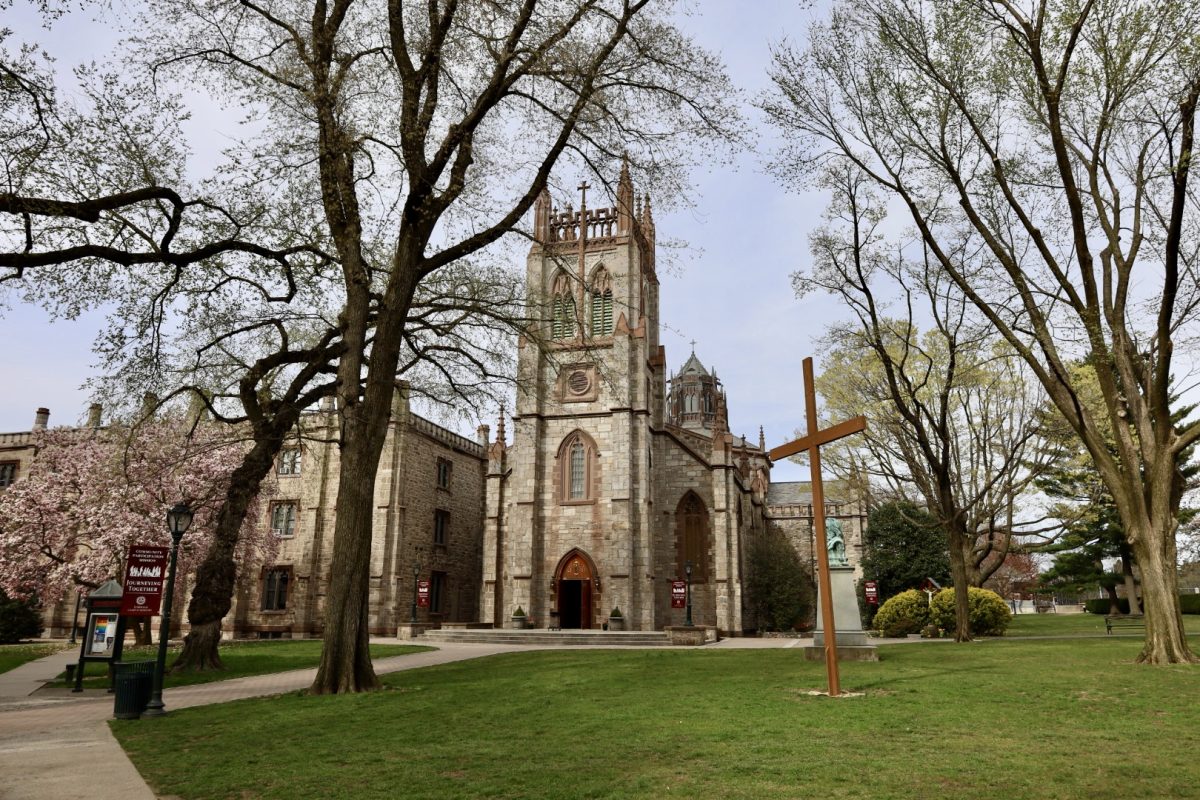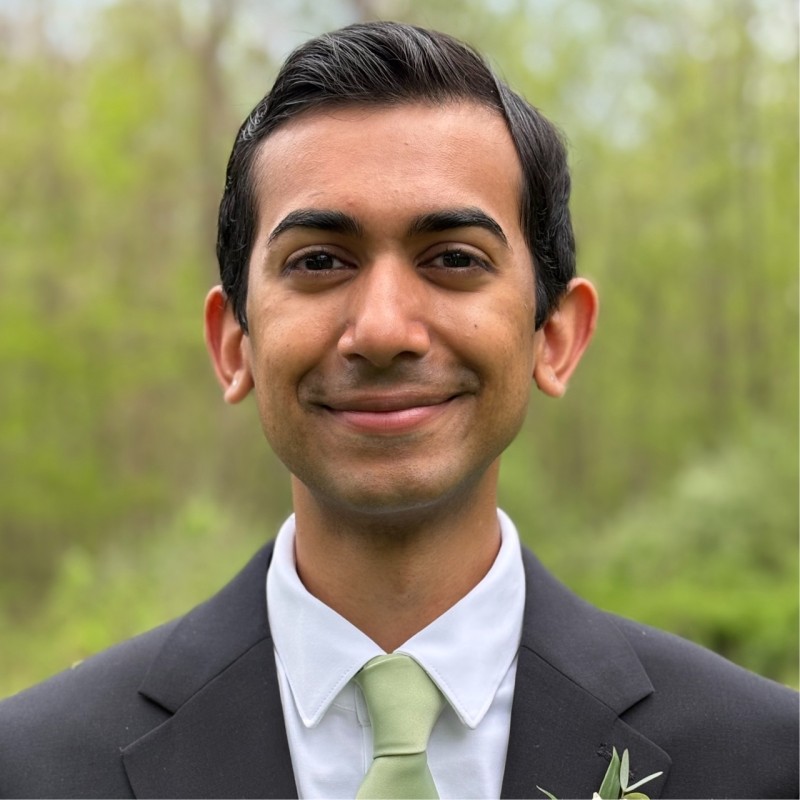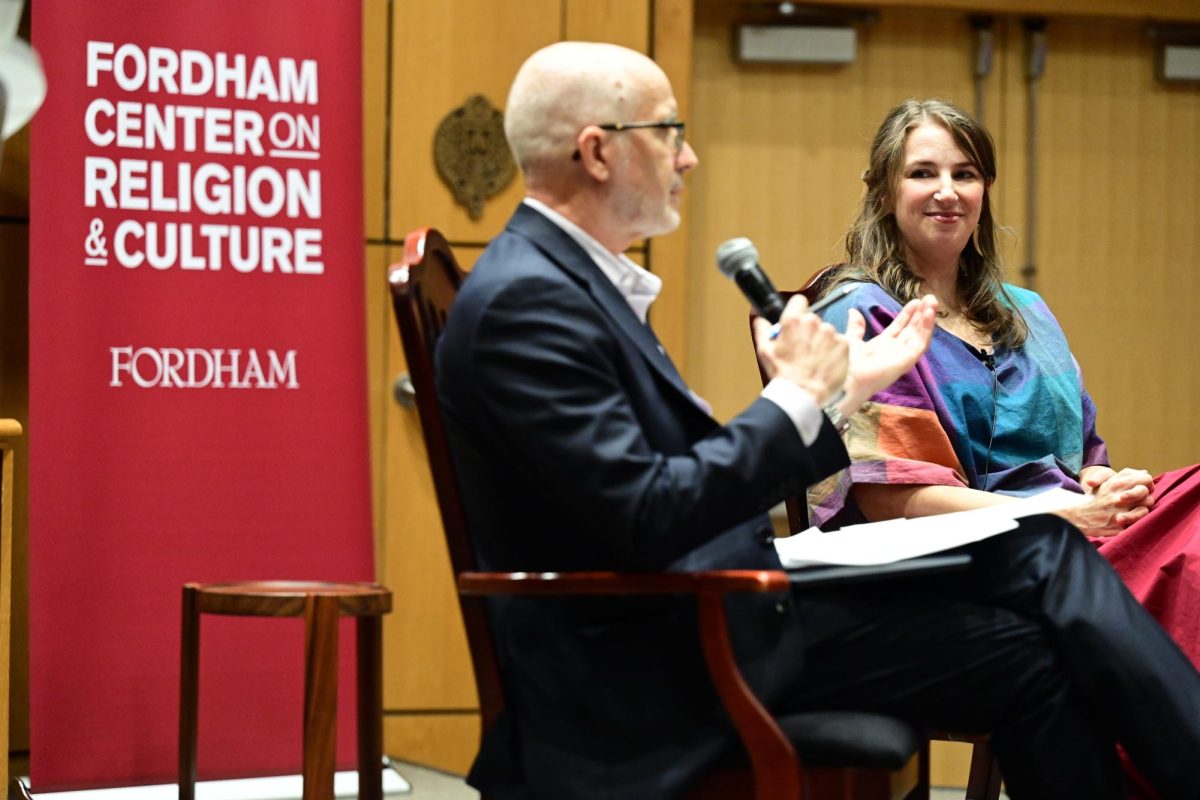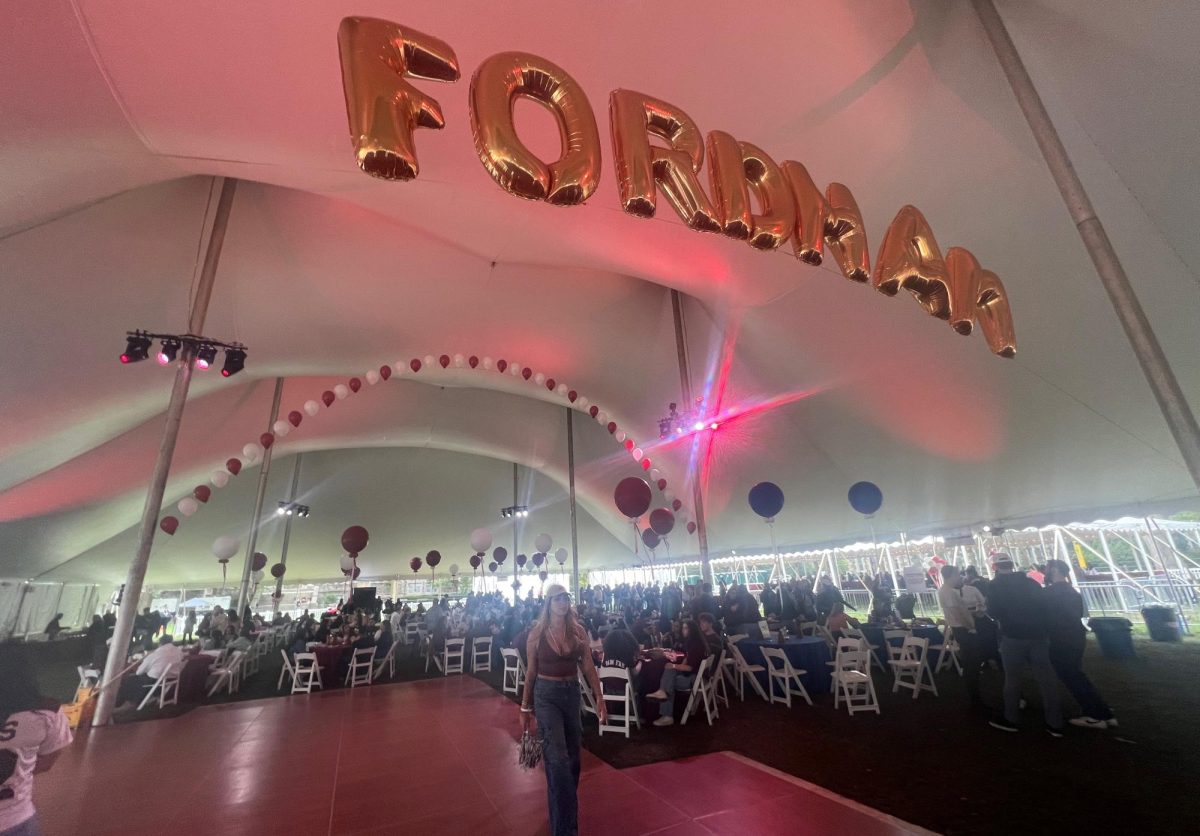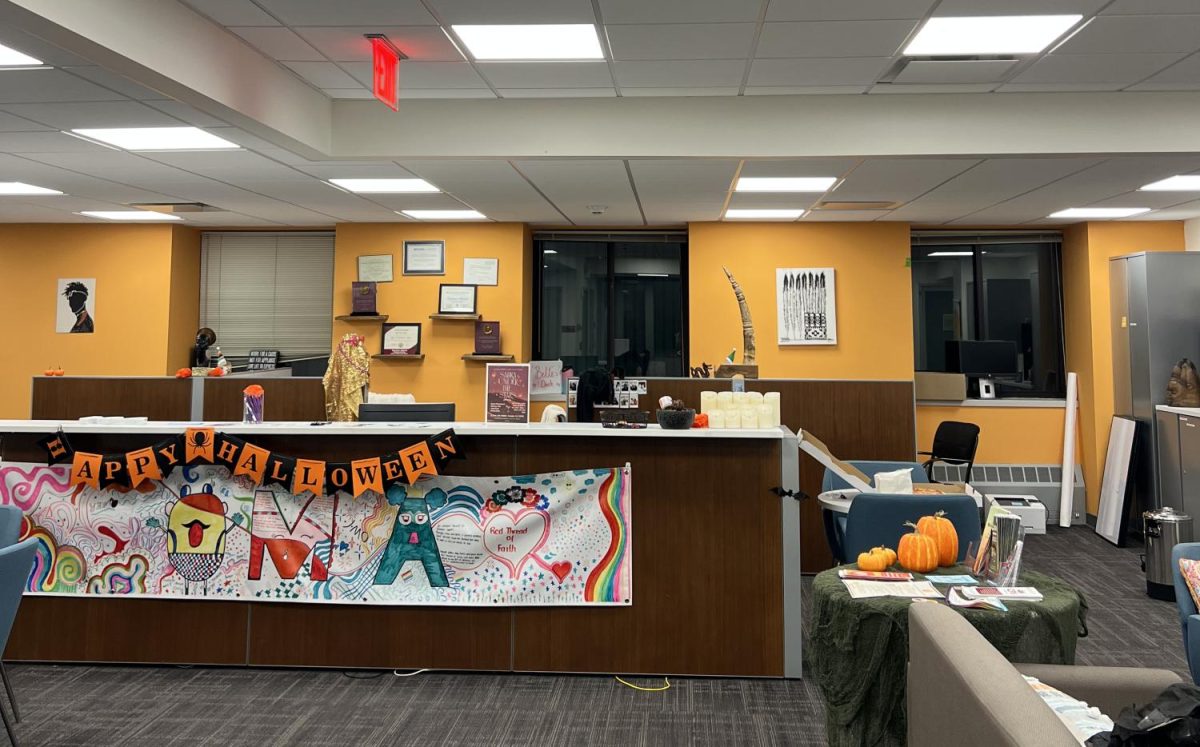
By Theresa Schliep
Student data on the quality of Fordham courses and professors is becoming increasingly difficult to collect. Students are completing end of the semester Student Evaluations of Educational Quality (SEEQs) at a much lower rate since the university digitized the forms, according to Susan Perciasepe, senior executive secretary for John P. Harrington, dean of faculty of arts and sciences.
Perciasepe said the colleges are “lucky” if they have a student response rate of 55 percent since the evaluations digitized in 2013 — down from a 70-80 percent response rate when evaluations were handed out on paper. The evaluations are distributed in the weeks before final exams start so as not to have final student grades affect the responses. Professors are supposed to use them to adjust their teaching based on feedback.
David Kovacs, professor of philosophy, gives time in class for his students to complete SEEQs.
“Formal student evaluation are very important for teachers to assess their own strengths and weaknesses,” said Kovacs. “Students might not always know that. So I think when professors explain this in class and provide in-class time for their completion, they are more likely to get fuller results.”
Kovacs said that when he provides time in class for the evaluations, he gets nearly a 100 percent rate of completion.
Allan Gilbert, Ph.D, professor of anthropology, was chair on the Faculty Evaluation Committee when paper forms were discontinued. He noted that since the transition, most students fill out the surveys outside the classroom as opposed to when they were on paper and typically distributed and retrieved during class time. According to Gilbert, completing the SEEQs in class typically results in higher rates of completion.
Monika McDermott, a political science professor, said SEEQ completion outside of classes becomes problematic because students do not feel like they need to complete the forms.
“This then becomes what we call a ‘collective action’ problem. Students assume other students will participate, so that they themselves don’t need to,” said McDermott. “But the more students that feel that way, the less correct the thinking since participation rates drop. It’s pretty much a vicious circle.”
In response to the drop off in participation rates, the university is looking to improve completion percentages in part by orienting SEEQs for a more mobile student body.
“We are initiating a new set of questions and we’ve re-calibrated our system to be re-optimized for tablets and cell phones,” said Davidson. “We are casually optimistic.”
McDermott said faculty are working on adding incentives for SEEQ completion.
“We believe that if everyone understands the benefit of the SEEQs, participation will increase” said McDermott.
In a Fordham Ram article covering the transition from paper to online SEEQs, Gilbert said the minimally acceptable rate of completion is 60 percent. Anything lower, he said, can be inaccurate in their portrayal of professors.
McDermott said students can benefit from participation in SEEQs, but only if all students complete them. “But if the SEEQs aren’t representative because not enough students take part, that benefit goes away,” said McDermott.
Gilbert said that low SEEQ participation rates were a two-fold problem.
First, instructors use SEEQs as feedback. More often than not, professors adjust their instructing based on comments and criticisms received.
“Low participation is problematic is the meager and possibly unrepresentative amount of anonymous comment that could lead to improvements in the presentation of individual courses,” said Gilbert.
The evaluations are also part of the reviews the faculty undergo during employment decision making. He said adjuncts are more often evaluated by a review of the SEEQs. Both adjunct faculty and full-time faculty are evaluated by SEEQs. If there are problems with instructors, further action occurs.
“SEEQ participation also helps the departments and programs oversee instructional quality, so they can address systematic critiques received by students and do the best they can to make sure that courses receive generally favorable assessments by students in the various areas covered by the SEEQ questionnaire,” said Allen.
SEEQs are not mandatory. Nestor Davidson, associate dean for academic affairs, attributed the voluntary nature of SEEQs to his thought that Fordham students are cognizant that these evaluations benefit students.
“I think our students are grown ups and they understand the importance,” said Davidson.
There are also no academic penalties for not completing SEEQs, though Davidson said they are of benefit to students and faculty alike.
“Our feeling is evaluations are very important, and the faculty take them very seriously,” said Davidson.



































































































































































































